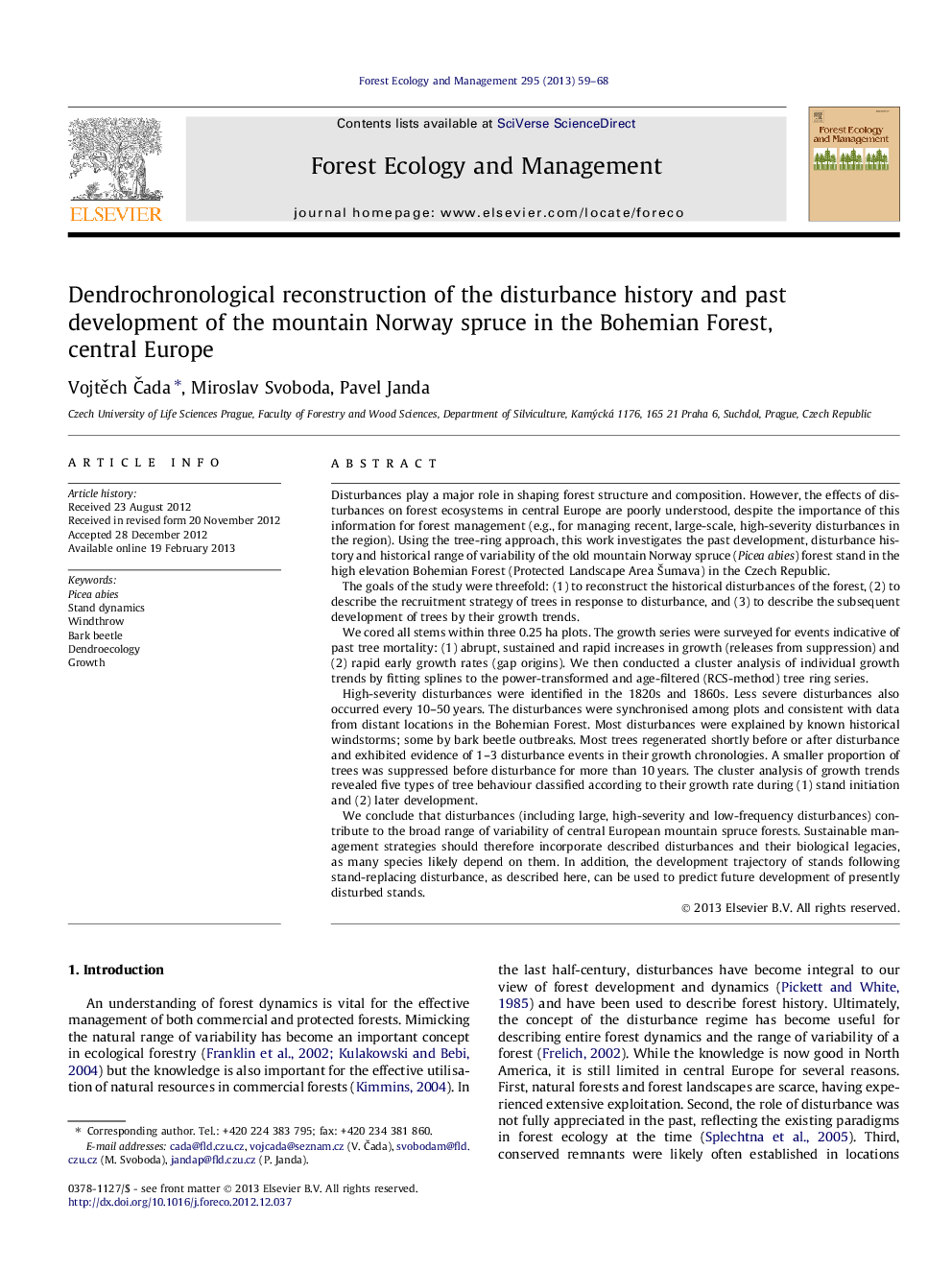| کد مقاله | کد نشریه | سال انتشار | مقاله انگلیسی | نسخه تمام متن |
|---|---|---|---|---|
| 86852 | 159217 | 2013 | 10 صفحه PDF | دانلود رایگان |

Disturbances play a major role in shaping forest structure and composition. However, the effects of disturbances on forest ecosystems in central Europe are poorly understood, despite the importance of this information for forest management (e.g., for managing recent, large-scale, high-severity disturbances in the region). Using the tree-ring approach, this work investigates the past development, disturbance history and historical range of variability of the old mountain Norway spruce (Picea abies) forest stand in the high elevation Bohemian Forest (Protected Landscape Area Šumava) in the Czech Republic.The goals of the study were threefold: (1) to reconstruct the historical disturbances of the forest, (2) to describe the recruitment strategy of trees in response to disturbance, and (3) to describe the subsequent development of trees by their growth trends.We cored all stems within three 0.25 ha plots. The growth series were surveyed for events indicative of past tree mortality: (1) abrupt, sustained and rapid increases in growth (releases from suppression) and (2) rapid early growth rates (gap origins). We then conducted a cluster analysis of individual growth trends by fitting splines to the power-transformed and age-filtered (RCS-method) tree ring series.High-severity disturbances were identified in the 1820s and 1860s. Less severe disturbances also occurred every 10–50 years. The disturbances were synchronised among plots and consistent with data from distant locations in the Bohemian Forest. Most disturbances were explained by known historical windstorms; some by bark beetle outbreaks. Most trees regenerated shortly before or after disturbance and exhibited evidence of 1–3 disturbance events in their growth chronologies. A smaller proportion of trees was suppressed before disturbance for more than 10 years. The cluster analysis of growth trends revealed five types of tree behaviour classified according to their growth rate during (1) stand initiation and (2) later development.We conclude that disturbances (including large, high-severity and low-frequency disturbances) contribute to the broad range of variability of central European mountain spruce forests. Sustainable management strategies should therefore incorporate described disturbances and their biological legacies, as many species likely depend on them. In addition, the development trajectory of stands following stand-replacing disturbance, as described here, can be used to predict future development of presently disturbed stands.
Figure optionsDownload as PowerPoint slideHighlights
► The mountain spruce stand in central Europe originated after severe disturbances.
► The disturbances corresponded to known windstorms occurring 15 and 19 decades ago.
► Most trees were recruited shortly before or after disturbance.
► The diversification of the tree growth pattern occurred after stand initiation.
► Low severity disturbances occurred frequently and affected stand development.
Journal: Forest Ecology and Management - Volume 295, 1 May 2013, Pages 59–68